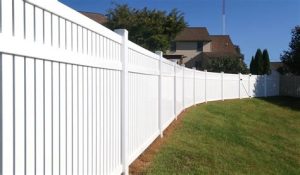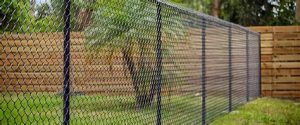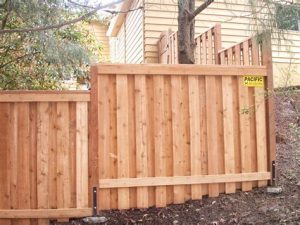Explore key factors in climate considerations, installation impacts, material performance in various seasons, weather challenges, and cost comparisons for informed decision-making.When it comes to installing a fence, the choice between winter and summer can significantly influence both the process and the end result. Understanding the seasonal dynamics is crucial for making an informed decision. Each season presents its own set of climate considerations, impacting not only the installation timeline but also the materials’ performance. From weather-related challenges that could arise during installation to cost comparisons that may surprise you, the implications of your choice can be far-reaching. In this blog post, we’ll delve into the key factors to consider, explore how temperature and weather conditions affect the installation process, and help you determine which season is optimal for your fencing project. Whether you’re gearing up for a backyard makeover or preparing for a property boundary, this guide will provide valuable insights to ensure your fence is a lasting investment.
Climate considerations
When deciding on the best time to install a fence, climate considerations play a pivotal role. Various weather conditions can influence not only the timing but also the effectiveness of the installation. For cold winter months, the ground can be frozen, making it difficult to dig post holes. On the other hand, during hot summer months, the heat can cause the materials, like wood, to expand and warp, potentially compromising the integrity of your fence.
In regions where harsh winters are common, installing a fence in late spring or early fall is ideal. These seasons offer milder temperatures that prevent the ground from being too soft or too hard. Moreover, avoiding the extreme weather conditions ensures that the crew can work efficiently without added challenges.
Conversely, in areas where summer temperatures can be intense, it’s vital to consider the effect of heat on your chosen materials. For instance, vinyl fences can become pliable and prone to damage in excessive heat. Therefore, if you are located in such regions, waiting for cooler days or opting for installation during transitional seasons may yield a better result.
Impact on installation process
When considering the impact on the installation process for fence construction, various factors can come into play, especially when comparing winter and summer installations. Both seasons bring their unique set of challenges and advantages that can significantly affect the overall efficiency and outcome of the project.
In summer, the longer daylight hours and generally favorable weather conditions can enhance productivity. Crews can work longer hours, and the ground is often easier to dig, allowing for quicker post-hole preparation. However, it’s important to acknowledge that the heat can pose risks, necessitating frequent breaks and hydration to ensure worker safety.
Conversely, the winter season may introduce complications such as frozen ground, making it difficult to dig post holes. The low temperatures could also lead to complications with certain materials, particularly those that are sensitive to cold. In some cases, special equipment or processes may be needed to ensure a high-quality installation. As a result, while winter installations can be challenging, they may also benefit from less competition for installation services, often resulting in more flexible scheduling and potentially lower costs.
Material performance in different seasons
When it comes to fence installation, understanding how various materials perform in different seasons is crucial. Some materials are more suited to withstand the extremes of winter and summer, while others may falter under adverse weather conditions. For instance, wooden fences are known for their aesthetic appeal, but they can warp and crack if not adequately treated before the cold months.
On the other hand, vinyl fences offer a resilient alternative, as they can withstand both the high temperatures of summer and the chilling cold of winter without significant degradation. Additionally, metal fences, such as those made from aluminum or wrought iron, can provide durability across seasons but may require protective coatings to prevent rust in humid or snowy conditions.
| Material | Winter Performance | Summer Performance |
|---|---|---|
| Wood | Prone to warping; requires treatment | Can splinter under extreme heat |
| Vinyl | Resistant to cold; retains color | Stays flexible; no fading |
| Metal | May rust in extreme moisture | Durable; can get hot to the touch |
Ultimately, selecting the right material for your fence installation requires careful consideration of how these materials will perform throughout the year. Being informed about their strengths and weaknesses in various weather conditions will help ensure that your investment stands the test of time.
Weather-related challenges
Installing a fence can be a significant investment, and the weather-related challenges during installation can impact both the quality of the work and the longevity of the materials used. When considering whether to install a fence in the winter or summer, it’s essential to recognize how different weather conditions can affect the process.
In the summer, extreme heat can pose a challenge. High temperatures can make the ground harder and may lead to complications when digging post holes. Additionally, excessive heat can affect the behavior of certain materials, causing them to warp or expand. It’s crucial for contractors and DIY enthusiasts to account for these factors, possibly choosing to work earlier in the morning or later in the afternoon when temperatures are lower.
Conversely, winter presents its unique set of challenges. Cold temperatures can make the ground frozen and difficult to dig. Snow and ice can hinder access to the installation site, while heavy precipitation may create muddy conditions that can damage the materials. Understanding these weather-related conditions is vital to ensure that the installation is not only completed efficiently but also that the final product will endure the test of time.
Cost comparison
When planning a fence installation, one of the most significant factors to consider is the cost comparison between installing in winter versus summer. The season in which you choose to install can greatly influence not only the initial costs, but also the long-term expenses associated with the fence.
Generally, summer installation tends to be more expensive due to higher demand for fencing services. Many homeowners prefer to install fences during the warmer months, which can lead to inflated prices. Additionally, the costs of materials may also increase due to higher production rates during these busy months. In contrast, winter installations may offer lower prices as fewer clients engage in outdoor projects, leading companies to have competitive rates to attract business.
Moreover, installation costs shouldn’t be the only focus. Considering the lifetime costs of the material used in each season is also essential. For example, certain materials may degrade faster in extreme weather, requiring potential replacements or repairs that could further increase overall expenses. Therefore, conducting a keen cost comparison is vital to ensure long-term satisfaction and value from your fence choice.
Frequently Asked Questions
What are the advantages of installing a fence in winter?
Winter can offer advantages like less ground disturbance, as the soil is typically frozen, making it easier to dig post holes. Additionally, contractors may have more availability and lower prices during the offseason.
Why might summer be a preferable time for fence installation?
Summer provides better weather conditions, allowing for quicker installation without the risk of frozen ground. It’s also easier to ensure that the fence is properly set and aligned in favorable temperatures.
How does the weather impact fence installation?
Extreme weather, such as heavy rain or snow, can delay installation projects. Winter weather can freeze the ground, while summer heat can cause issues with certain materials that expand or contract.
Are there specific types of fences better suited for winter installation?
Certain materials like vinyl and composite fences can be installed in cold weather, as they are less affected by temperature fluctuations. However, wooden fences may require more care, as the wood can be more brittle in cold conditions.
What should homeowners consider when deciding the best time to install a fence?
Homeowners should consider local weather patterns, their budget, the type of fence materials, and the availability of contractors. It’s also important to think about when the yard is most accessible.
Can installing a fence in summer lead to higher costs?
Yes, installing a fence during peak summer months can often lead to higher costs due to increased demand, limited contractor availability, and potential price hikes for materials.
What maintenance differences should homeowners expect based on the season a fence is installed?
Fences installed in the winter may not require as much immediate maintenance due to lesser plant growth compared to summer installations, which might need more frequent checks for damage from heat and humidity.





